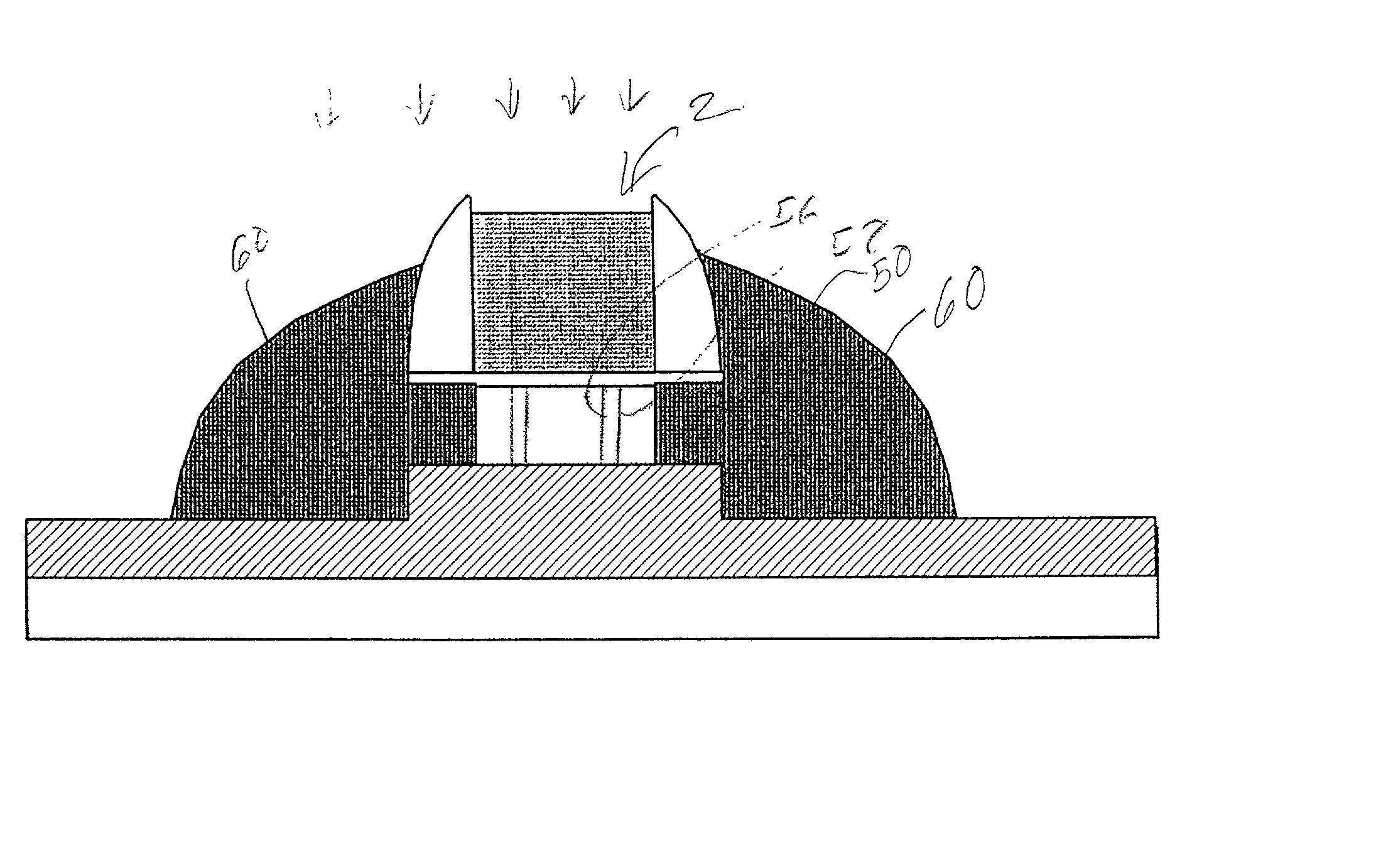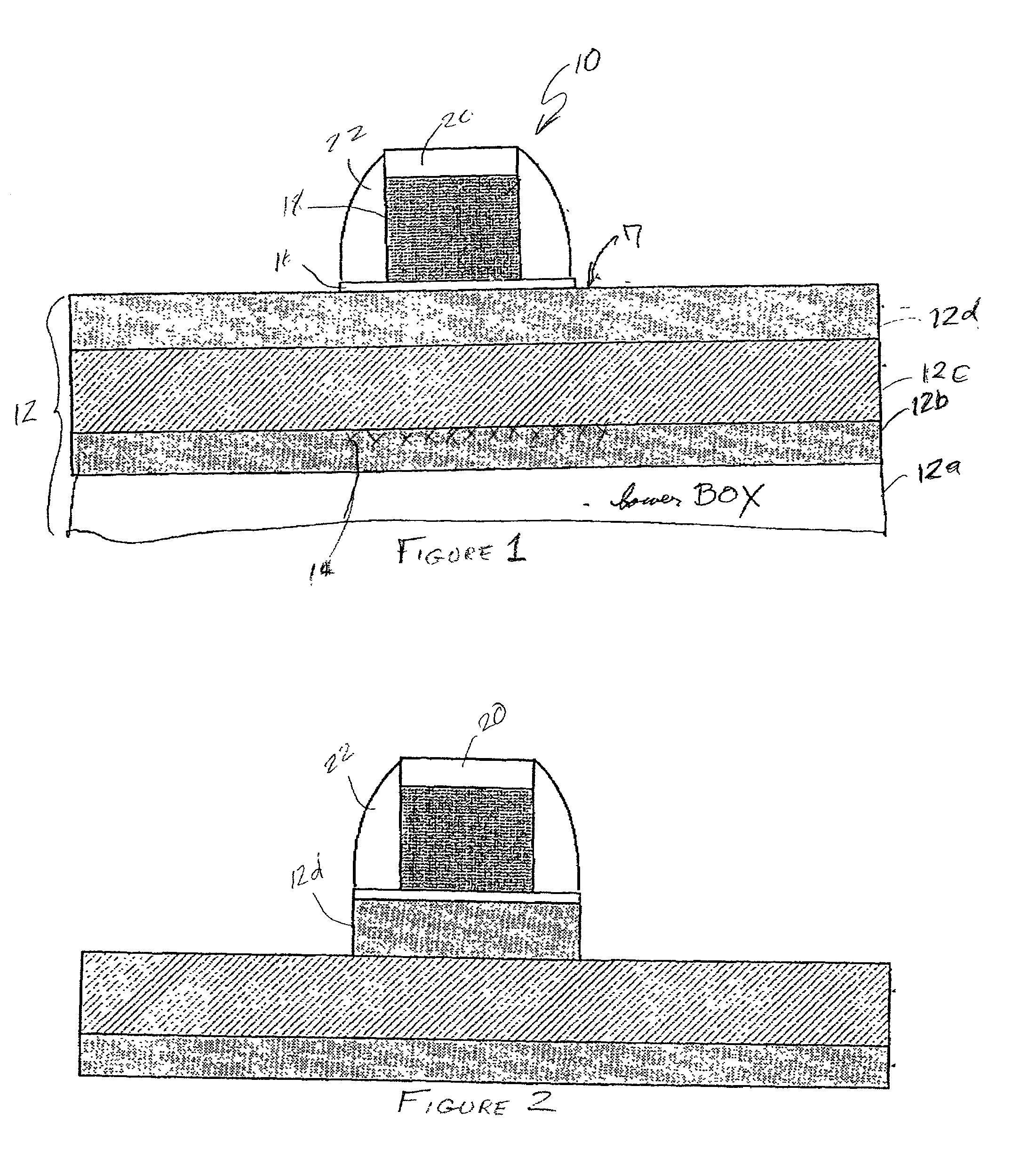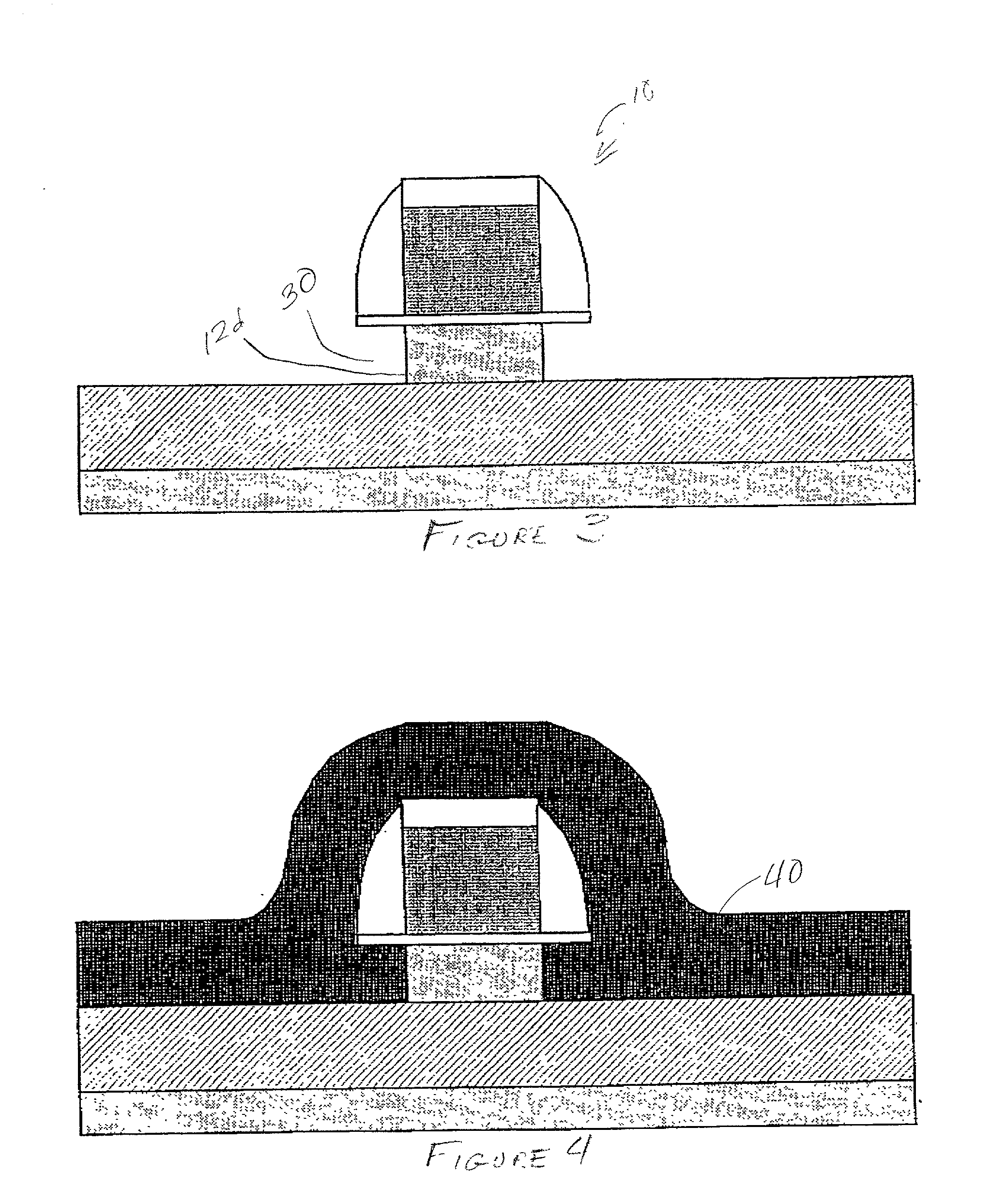Soi transistor with polysilicon seed
a technology of polysilicon seed and transistor, which is applied in the direction of transistors, semiconductor devices, electrical apparatus, etc., can solve the problems of reducing the active device dimension, limiting the performance which can be obtained, and difficulty in scaling semiconductor structures
- Summary
- Abstract
- Description
- Claims
- Application Information
AI Technical Summary
Benefits of technology
Problems solved by technology
Method used
Image
Examples
Embodiment Construction
[0023] Referring now to the drawings, and more particularly to FIG. 1, there is shown, in crosssection, an early stage in the manufacture of a transistor in accordance with the present invention. Those skilled in the art will recognize that the gate structure 10 is, at this point, similar to conventional gate structures and that the chip or wafer 12 is depicted as a silicon-on-insulator (SOI) structure. It should be appreciated, however, that the invention is also applicable to bulk semiconductor wafers and to semiconductor materials other than silicon and mixtures and alloys thereof, such as SiGe on insulator. The configuration of the various layers of the SOI is not at all critical to the practice of the invention and is depicted principally for illustrative purposes to demonstrate compatibility of the invention with virtually any such configuration. By the same token, a transistor in accordance with the invention can be formed at any location where a layer of silicon overlies a l...
PUM
 Login to View More
Login to View More Abstract
Description
Claims
Application Information
 Login to View More
Login to View More - R&D
- Intellectual Property
- Life Sciences
- Materials
- Tech Scout
- Unparalleled Data Quality
- Higher Quality Content
- 60% Fewer Hallucinations
Browse by: Latest US Patents, China's latest patents, Technical Efficacy Thesaurus, Application Domain, Technology Topic, Popular Technical Reports.
© 2025 PatSnap. All rights reserved.Legal|Privacy policy|Modern Slavery Act Transparency Statement|Sitemap|About US| Contact US: help@patsnap.com



